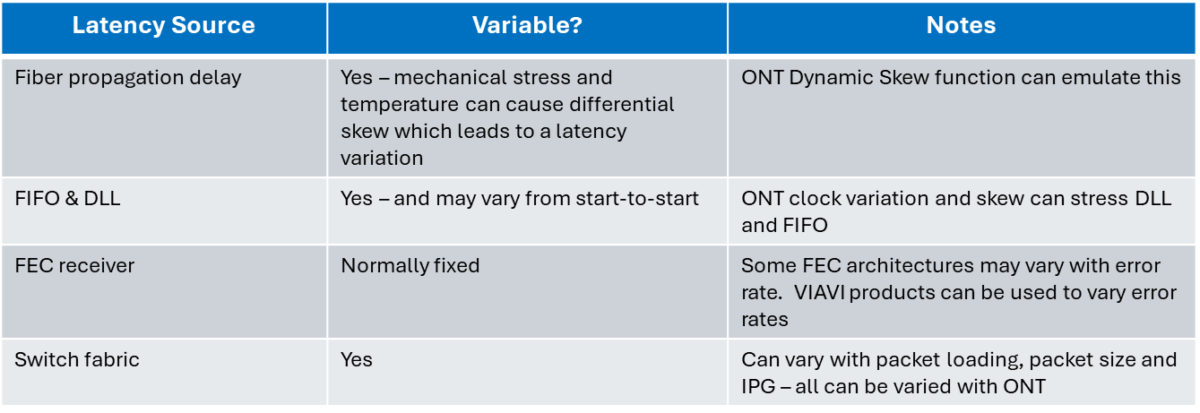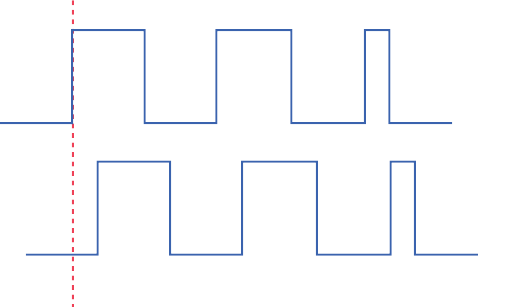AI and ML – Why every nanosecond matters and how to really know your latency

We at VIAVI have long been aware of the impact of latency on the datacoms and telecoms ecosystem. Specialized applications have been developed which allow customers to develop and evaluate ICs, optical modules, ASICs and systems based on their bandwidth throughput and latency.
Historically, people have focused on microseconds, but increasingly – especially driven by AI and ML applications – we now must support measurements in nanosecond epoch. The ecosystem requires visibility at the nanosecond level with the ability to track critical variations. Furthermore, these measurements need to be done not just with full bandwidth loading, but other stressors which occur in every large-scale fabric like skew variation.
Sources of Latency
Many factors contribute to latency in a link, including the delay from optical propagation in fiber through to the delay to the FEC in the Ethernet PCS layer. Some of the delays are generally fixed, but many contributors to latency can vary due to environmental factors, packet loading and signal integrity. Some key factors are listed below:

Skew Variation
 Skew occurs naturally in any system due to temperature, mechanical stress, voltage and time – the unique VIAVI ONT-800 application allows precision skew variation.
Skew occurs naturally in any system due to temperature, mechanical stress, voltage and time – the unique VIAVI ONT-800 application allows precision skew variation.
Massive parallel fabric will always see lane-to-lane skew variation. Time, voltage, temperature, and fiber mechanics will all cause picosecond level variation across the physical lanes in both the optical and electrical domain. Perhaps skew will force a DLL or FIFO to fill, adding latency or even worse, overflow and flush.
The true impact of these effects can only be quantified when using the combination of the VIAVI ONT-800 dynamic skew and precision latency applications. With such visibility you can quickly optimize FIFO and DLL in the ICs, low level firmware can be tuned, and the required performance can be benchmarked with certainty. A few picoseconds change in one physical lane from skew can ripple through to tens of nanoseconds of variation, stalling pipes and impacting processing throughput. Combining the VIAVI ONT dynamic skew and precision latency applications gives complete coverage and full DUT confidence – from ICs to modules to systems.
Read our whitepaper, Dynamic Skew – the key to accelerating product debugging and validation, for a more detailed discussion about Dynamic Skew.
Complete Verification System for Stressed Latency
The VIAVI ONT measures latency with 500 psec resolution
Since this is all integrated in the VIAVI ONT it can be automated, and coupled with our MAP photonic equipment, to deliver a complete verification system for stressed latency so real-world performance can be assured.
VIAVI Can Help!
To get an insightful view of your high-speed optical module performance using testing solutions that meet the highest industry standards—speak to our VIAVI applications team.
Also, please read our other recent blogs: When ‘Just Good Enough’ isn’t Good Enough, Integrated Testing Simplifies DCO Complexities, What’s All the 800G Stuff? Evolution, Revolution…or Both?, What’s All This Error Fingerprint Stuff?, and Bamboozled by Bit Errors?





